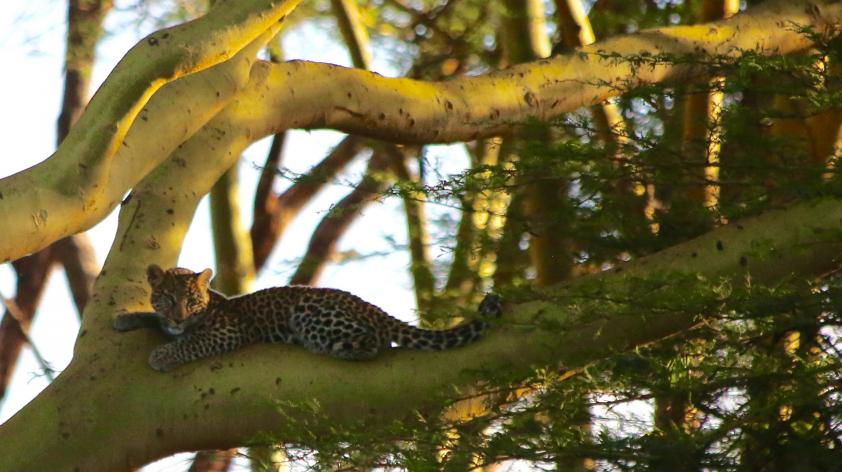
Living with Leopards: Community conflicts in northern Kenya
“Do leopards cause you any problems?” Your answer to this question likely depends on where you live in the world and your primary source of income. When this question was asked to community members around Loisaba Conservancy, 75% of people said yes, that leopards kill or injure their livestock. Such experiences can influence community members’ attitudes towards leopards and decisions when they come across leopards in the future. These connections are important to understand for conservation because leopard populations are in decline across their range. Leopards are listed Vulnerable by IUCN, with human-leopard conflict listed as the greatest source of direct mortality.
Pastoralism is the dominant lifestyle in this region, so negative interactions charge the dynamics between people and wildlife. Most of the wildlife in Kenya lives outside of government parks and reserves, so it is critical to work with communities that are sharing land and resources with the wildlife that we want to protect. To better understand the ways that people are interacting with and perceiving leopards, San Diego Zoo Global is working in partnership with Loisaba Conservancy to conduct social and ecological (see “Luring Wild, Camera-Shy Leopards into Getting their Photo Taken”) research on the local leopard population.
In the summer of 2017, a member of our leopard team, Ambrose Letoluai, conducted close to 90 interviews in communities around Loisaba. Ambrose completed his secondary education with support from the Loisaba Community Conservation Foundation, recently graduated from the Kenya Wildlife Service Training Institute, and was eager to return home and apply his new skills and passion for conservation.
He collected data so we can test the relationship between livestock loss, risk perceptions, attitudes, and behavioral intentions towards leopards. Another key aspect was getting information on the ways that people are currently protecting their livestock. People have reinforced their bomas (corrals) with wire mesh, put out solar lights, and fixed wind chimes or propellers to create noise and deter predators at night.
These measures may help prevent livestock loss to leopards, but we couldn’t know that until we started collecting this information and monitoring human-leopard interactions over time. Moving forward, we hope to combine what we learn about the leopards living on Loisaba with the information gathered in these interviews (like where the most livestock loss is occurring) to find solutions that work for communities and help protect leopards in the spaces that they share.
This research is a collaborative effort between San Diego Zoo Global, Loisaba Conservancy, The Nature Conservancy, Mpala Research Centre, and Kenya Wildlife Service, and project investigators are: Nicholas Pilfold (SDZG), Ambrose Letoluai (Loisaba), Hannah Campbell (Loisaba), Megan Owen (SDZG), Symon Masiaine (Loisaba), Dino Martins (Mpala Research Centre), David O’Connor (SDZG), and Jenny Glikman (SDZG).













